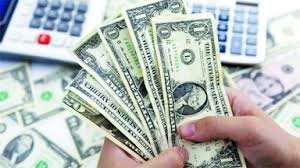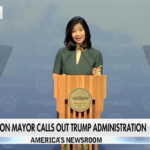The U.S. dollar staged a rebound against its major peers on Wednesday on hopes of de-escalating trade tensions and as President Donald Trump backed away from threats to fire the head of the Federal Reserve, offering relief to investors.
The Trump administration would look at lowering tariffs on imported Chinese goods pending talks with Beijing, a source familiar with the matter said on Wednesday, adding that any action would not be made unilaterally. Hopes that the trade war would abate boosted the greenback against the euro and the Swiss franc.
U.S. Treasury Secretary Scott Bessent separately suggested that there could be a de-escalation in U.S.-China trade tensions and any trade deal with China could substantially cut tariffs.
Investors hastened back to the dollar, which has been hovering near three-year lows in recent weeks and whose safe-haven status had been questioned in view of Trump’s trade policies and their potential impact on the U.S. economy.
“People are, just generally speaking, very relieved that there’s the potential for discussions between the two countries, and we’re seeing that play out in a big way,” said Helen Given, director of trading at Monex USA.
The U.S. dollar index rose rapidly at the start of the trading day in Asian hours, but steadied afterward as market sentiment remained fragile. It was last up 0.297% at 99.86.
Markets this week have also been grappling with the notion that the Fed’s independence could be under threat after repeated verbal attacks by Trump on Chair Jerome Powell for not cutting rates since the president took office in January.
Trump appeared to back down in remarks late on Tuesday.
“I have no intention of firing him,” Trump told reporters in the Oval Office. “I would like to see him be a little more active in terms of his idea to lower interest rates.”
Lee Hardman, senior currency analyst at MUFG, said the “outright denial” from Trump was an encouraging signal for the markets.
The euro eased 0.86% to $1.132, pulling back from the $1.15 levels earlier this week which marked a high of roughly 3-1/2-years.
Surveys on Wednesday showed euro zone business growth stalling and Germany’s private sector contracting this month, hurt by service-sector woes and trade-related uncertainty.
The dollar climbed 1.27% against the yen to 143.435. Against the Swiss franc , the dollar was last 1.32% stronger at 0.8298.
Despite its attempted rebound, the dollar is not far off its multiyear lows against the euro and the Swiss franc and seven-month low versus the Japanese yen.
“We think this is going to be a theme going forward. We will see continued shocks that place downside pressure on the dollar, repeated walk-backs to see the dollar bounce. But again, the dollar will not return to previous highs,” said Nicholas Rees, head of macro research at Monex Europe. “Markets don’t trust Donald Trump.”
After setting a baseline import tax of 10% and much higher on dozens of countries at the start of the month, Trump abruptly put the steeper levies on hold for 90 days for countries to negotiate less stringent rates.
White House press secretary Karoline Leavitt said on Tuesday that 18 countries have offered proposals so far, with Trump’s trade negotiating team set to meet with 34 this week to discuss tariffs.
In cryptocurrencies, bitcoin rose over 2% to $93,705, breaking above $90,000 for the first time since March.










